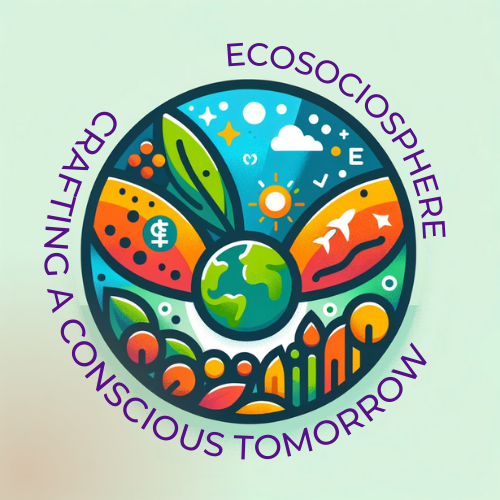Fun Fact: The SARS-CoV-2 virus, responsible for COVID-19, is the most sequenced virus in history, with over 17 million genome sequences recorded!
The COVID-19 pandemic had a profound global impact, but did you know it also transformed the field of virology? Scientists have learned more about viruses in the past five years than in decades of previous research. The scientific journal Nature’s article “Four Ways COVID Changed Virology” highlights some of the most significant scientific breakthroughs brought by the pandemic. From real-time virus tracking to understanding how viruses evolve and change, SARS-CoV-2 has rewritten the rulebook on how we study infectious diseases.
In this blog, we’ll explore four major ways COVID-19 changed virology forever and what these lessons mean for future pandemics.
Lesson 1: Virus Genome Sequencing is Now Faster and Smarter
What Changed?
Before COVID-19, viral genome sequencing was slow and used mainly in academic settings. But when the pandemic hit, scientists worldwide came together to sequence the SARS-CoV-2 virus at an unprecedented speed.
- In January 2020, Chinese scientist Zhang Yongzhen sequenced the first SARS-CoV-2 genome and shared it with the world.
- By December 2020, more than 300,000 sequences had been submitted to the Global Initiative on Sharing All Influenza Data (GISAID).
- As of 2025, over 17 million genome sequences exist, making SARS-CoV-2 the most analysed virus in history.
Why Does This Matter?
- Faster variant detection: Scientists detected dangerous mutations, like Delta and Omicron, early enough to warn governments and pharmaceutical companies.
- Better vaccines and treatments: Understanding how the virus mutates allowed vaccine developers, such as Pfizer—a leading pharmaceutical company behind the mRNA COVID-19 vaccine—and Moderna, a biotech firm specializing in mRNA-based vaccines and treatments, to rapidly update their formulas.
- Global cooperation: Countries like the UK and the US contributed the most data, but even lower-resource nations like South Africa and India played a key role.
Real-World Example
In December 2021, scientists in South Africa quickly identified and shared data on the Omicron variant, helping the world respond faster. This would have been impossible with pre-COVID sequencing methods.

Lesson 2: Viruses Mutate Faster Than We Thought
What Changed?
Before COVID-19, scientists thought respiratory viruses like influenza mutated at a predictable rate. But SARS-CoV-2 shattered those assumptions.
- In just one year, SARS-CoV-2 developed multiple high-impact mutations, leading to variants like Alpha, Beta, Delta, and Omicron.
- The Omicron variant showed a completely different infection pattern, preferring the upper airways rather than the lungs.
- Some variants, like Delta, became more virulent (severe), disproving the old belief that viruses always evolve to become milder.
Why Does This Matter?
- Public health strategies must adapt. Governments need to be prepared for fast-changing viruses, not assume they will weaken over time.
- Vaccines must be updated frequently. The old approach of developing a single vaccine may not work against rapidly evolving viruses.
- Real-time surveillance is key. The ability to track mutations instantly helps scientists predict which variants may become dominant.
Real-World Example
The flu virus mutates seasonally, requiring new vaccines every year. But SARS-CoV-2 mutated multiple times a year, challenging scientists to rethink how they track and respond to viruses.
Lesson 3: Chronic Infections May Create New Variants
What Changed?
Scientists traditionally believed that respiratory viruses like COVID-19 clear quickly from the body. However, research now suggests that long-term infections in immunocompromised people might be a breeding ground for dangerous variants.
- In 2020, a patient in the UK had a 102-day-long SARS-CoV-2 infection. The virus mutated rapidly inside his body, producing changes similar to the Alpha variant.
- Many scientists believe Omicron evolved in a chronically infected individual, possibly someone with untreated HIV/AIDS.
- South Africa, where HIV rates are high, has been a hotspot for new COVID variants, raising concerns that chronic infections may fuel viral evolution.
Why Does This Matter?
- Long-term infections could be mutation factories. These patients might unknowingly generate new, more transmissible, or vaccine-resistant variants.
- Better treatments for immunocompromised patients are needed to prevent long-term infections.
- New research is exploring whether this applies to other viruses, like Ebola and RSV (respiratory syncytial virus).
Real-World Example
Scientists are now investigating how mpox (formerly monkeypox) and chikungunya virus may also mutate within long-term infections. This research could help prevent future pandemics.
Lesson 4: Science is Now More Fast-Paced and Collaborative
What Changed?
Before COVID-19, scientific research could take years to produce results. But during the pandemic, scientists had to move at lightning speed.
- Vaccine development was cut from 10 years to less than 1 year.
- Real-time data sharing helped researchers analyse new variants within days.
- Even non-scientists played a role—some amateur data analysts helped track new mutations!
Why Does This Matter?
- Faster responses to future pandemics. The systems built for COVID-19 can be adapted for other diseases.
- More funding for public health research. But unfortunately, some governments are now cutting funding, which could slow progress.
- International collaboration is critical. The next pandemic might start anywhere in the world, so global cooperation is essential.
Real-World Example
Countries initially competed for vaccine supplies, but later, global initiatives like COVAX (a worldwide initiative led by WHO to ensure fair vaccine distribution) helped provide vaccines to lower-income nations.
Conclusion
COVID-19 reshaped virology in four major ways:
- Genome sequencing has become faster and more powerful.
- Viruses can mutate more rapidly than previously thought.
- Chronic infections may be key drivers of new variants.
- Science is now more fast-paced, open, and collaborative.
The next pandemic could be even more unpredictable than COVID-19. To stay prepared, governments, scientists, and the public must continue investing in virus surveillance, global collaboration, and rapid-response science.
Author’s Note
Science is always evolving, and COVID-19 has pushed us into a new era of viral research. I hope this blog helps you appreciate the incredible work scientists do to keep us safe. Let’s keep learning and preparing for the future!
G.C., Ecosociosphere contributor.





Comments
Mitolyn I truly appreciate your technique of writing a blog. I added it to my bookmark site list and will
Puraburn very informative articles or reviews at this time.